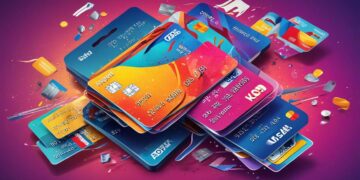Apps that Help Manage Personal Finances

Understanding Personal Finance Management Tools
Managing personal finances can often feel overwhelming. Factors such as fluctuating expenses, varying income streams, and the complexities of financial obligations can leave many feeling lost. However, with the right tools, navigating your financial landscape can become significantly more manageable. In today’s digital landscape, there is a plethora of apps specifically designed to guide individuals through budgeting, expense tracking, and achieving their financial aspirations.
One of the standout features of these finance apps is their capacity to cater to diverse financial situations. This includes not only basic budgeting but also more complex needs such as investment tracking and bill management. For instance, many apps now incorporate budgeting tools that allow users to set financial limits across categories like groceries or entertainment. By doing this, you can gain clarity on where your money is going and identify areas where you can cut back.
Another valuable feature is expense tracking, which automatically records your spending patterns, making it easier to monitor daily transactions. For example, if you frequently dine out, an expense tracker can highlight this habit, prompting you to reevaluate your dining budget. This proactive approach helps eliminate the risk of overspending inadvertently.
Additionally, investment monitoring tools can help you keep a close eye on your portfolio’s performance across various assets, such as stocks or real estate. Understanding how your investments are doing in real time allows you to make informed decisions about when to buy or sell, ultimately optimizing your returns. Similarly, bill reminders feature prominently, alerting you to upcoming payments. This can prevent costly late fees and help maintain a good credit score.
For users in Australia, it is especially important to choose apps that accommodate local currencies and seamlessly integrate with Australian banking systems. Notable choices include MoneyBrilliant, which excels at managing household budgets, and Pocketbook, a free personal finance tracker that synchronizes directly with Australian banks to provide a clear overview of your finances. Another popular option is YNAB (You Need A Budget), which emphasizes proactive budgeting strategies aimed at building financial discipline.
By utilizing these applications, you empower yourself with better insights into your financial health, enabling you to cultivate healthier spending habits. This transformation can significantly enhance your financial stability, paving the way for important life goals, whether that be purchasing a home, saving for a family, or preparing for retirement. Ultimately, achieving financial literacy not only fosters a sense of security but also provides the freedom to live life on your terms.
Key Features to Look for in Personal Finance Apps
When selecting a personal finance app, it is crucial to understand the various features that can significantly simplify your financial management process. Not all finance apps are created equal; some are tailored for specific needs, while others offer comprehensive tools for a holistic approach to managing your finances. Here are some key features to consider:
- User-Friendly Interface: An intuitive design ensures you can quickly navigate the app without feeling overwhelmed. Look for apps that have simple dashboards and clear instructions.
- Budgeting Capabilities: A robust budgeting tool allows you to plan and allocate your income effectively. You should be able to create budgets based on categories such as savings, groceries, and entertainment, helping you to visualise your financial boundaries.
- Expense Tracking: The ability to log and categorize your expenses automatically helps you stay on top of your spending habits. Some apps can connect to your bank accounts, automatically recording transactions and classifying them into categories.
- Goal Setting: Many apps include features that let you set financial goals, whether it’s saving for a vacation or paying off debt. This function can keep you motivated by providing visual progress indicators.
- Investment Tracking: If you have investments, look for an app that provides real-time updates on your portfolio. This feature is essential for making timely decisions regarding your investments.
- Bill Reminder Notifications: By alerting you of upcoming bills, these reminders help prevent late payments and avoid unnecessary fees, ultimately aiding in maintaining a healthy credit score.
- Secure Data Protection: Financial apps handle sensitive information; thus, it’s vital to choose an app that employs strong security measures to protect your data from potential threats.
In addition to these features, pay attention to the app’s compatibility with your local banking system and currency. In Australia, for instance, apps like MoneyBrilliant allow seamless integration with local banks, making it easier to track expenses and income in AUD. Similarly, Pocketbook provides real-time insights into your spending habits, giving you a clearer understanding of your financial situation.
Another noteworthy option is YNAB (You Need A Budget), which promotes a proactive approach to managing finances. It encourages users to allocate every dollar they earn, helping to cultivate disciplined spending habits aimed at building positive financial outcomes.
By focusing on these critical features, you can select an app that aligns with your financial goals and preferences. A well-chosen personal finance app can serve as a vital tool to improve your financial literacy, empower better spending choices, and ultimately lead to long-term financial health.
Popular Personal Finance Apps in Australia
In the ever-evolving landscape of personal finance management, several apps stand out for their unique features and functionality tailored for users in Australia. By leveraging these tools, you can streamline your financial activities and gain valuable insights into your spending and saving habits. Let’s explore some of the most popular personal finance apps available.
- MoneyBrilliant: Designed with the Australian user in mind, MoneyBrilliant offers a comprehensive suite of features. It enables effortless expense tracking by linking to your bank accounts, categorising spending automatically. You can also set budgets and monitor your financial goals. The app’s interactive dashboard makes it easy to see where your money is going at a glance.
- Pocketbook: This user-friendly app is praised for its simplicity and effectiveness. Pocketbook allows users to sync their bank accounts securely, providing real-time updates of their spending. Its categorisation feature helps users understand their financial habits better, and with bill reminders, it ensures timely payments are made without the stress of late fees.
- YNAB (You Need A Budget): While YNAB is a global app, it has gained popularity in Australia for its unique approach to budgeting. It focuses on giving every dollar a job, encouraging users to allocate funds towards expenses, savings, and debt repayment. By promoting a forward-thinking budgeting strategy, YNAB empowers users to take control of their finances and develop positive financial behaviours.
- Beem It: Beem It stands out as a peer-to-peer payment app, enabling users to send and receive money easily. While primarily a payment platform, Beem It also provides features for tracking your expenses, making it easier to manage shared costs with friends or family. This is particularly useful for Australians who frequently split bills when dining out or on group trips.
- Coinly: For individuals involved in cryptocurrency, Coinly offers essential tools for managing crypto investments. It enables users to keep track of their crypto transactions and calculates capital gains for tax reporting, ensuring that you stay compliant with Australia’s tax laws regarding digital currencies.
Integration with Financial Institutions
When choosing a personal finance app, you should consider its integration capabilities with Australian banks and financial institutions. Apps like MoneyBrilliant and Pocketbook excel in this area, as they have established partnerships with major banks, allowing for seamless transaction syncing. This not only saves time but also enhances the accuracy of your financial records—meaning you can rely on the figures provided by the app without needing manual input.
The Importance of Data Security and Privacy
As you navigate through app options, it’s essential to prioritise data security. Financial apps are privy to your sensitive information such as bank account details and personal transactions. Understanding an app’s security measures can give you peace of mind. Look for apps that employ encryption technologies and comply with Australian regulations for data protection. Apps like Pocketbook and YNAB take security seriously, employing robust protocols to safeguard user information.
Moreover, consider how these apps handle data privacy. Transparency in their practices allows you to make informed choices about sharing your information. Most reputable apps provide insights about data usage and the extent to which your information is shared with third parties, allowing you to manage your online footprint effectively.
By exploring these popular options and understanding their features—along with considerations for integration and data security—you can find the perfect personal finance app that meets your needs and helps you on your journey toward financial literacy and health.
Conclusion
As you navigate the journey towards better personal finance management, leveraging the right tools can make an incredible difference. The personal finance apps discussed in this article, such as MoneyBrilliant, Pocketbook, YNAB, Beem It, and Coinly, each offer unique advantages that cater to various financial needs and preferences. These applications serve not only as digital wallets but as comprehensive financial assistants that help you monitor spending, set budgets, and achieve financial goals.
Moreover, understanding how these apps integrate with Australian financial institutions is crucial. Seamless integration takes the manual effort out of tracking your finances, ensuring your records are up-to-date and accurate. Additionally, as security and privacy concerns grow in importance, knowing that your sensitive information is protected by strong encryption and regulatory compliance is essential. Using reputable apps can safeguard your finances while allowing you to manage them more effectively.
In conclusion, remember that selecting the right app is just the first step. Regularly reviewing your spending habits and financial goals is key to achieving a healthier financial future. By harnessing the capabilities of these apps, you not only equip yourself with valuable tools but also cultivate a deeper understanding of your financial landscape. Embrace these technologies to foster better financial health, empowering you to make informed decisions now and in the future.

Linda Carter is a writer and financial expert specializing in personal finance and financial planning. With extensive experience helping individuals achieve financial stability and make informed decisions, Linda shares her knowledge on the Take Care Garden platform. Her goal is to empower readers with practical advice and strategies for financial success.






